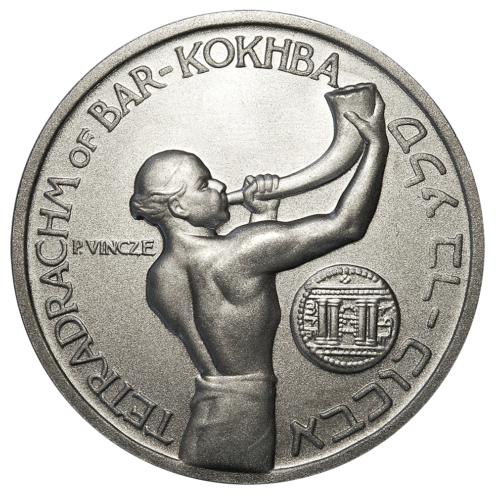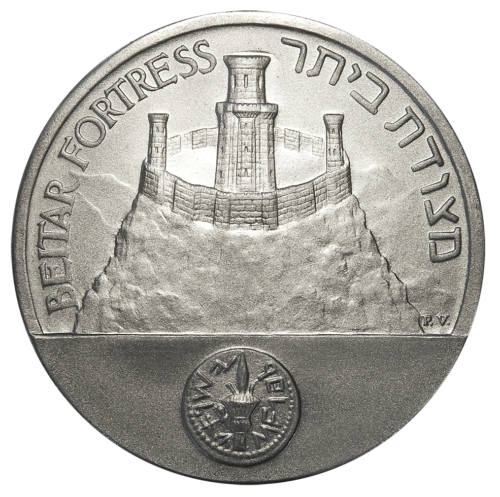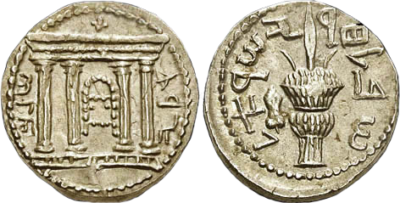M317
Silver (frosted, proof-like finish), AU
57 mm (2-1/8”), 77.76 grams
HISTORY: The internationally acclaimed medalist, Hungarian-born sculptor Paul Vincze (1907–1994), was commissioned in 1968 to design this medal for Isnumat (The Israel Numismatic, Antiquities & Arts Company, Ltd). Vincze was inducted into the Jewish-American Hall of Fame in 1986. On the website of the American Numismatic Association, they note that Vincze’s distinctive classical modelling technique is easily recognizable and that some of the finest commemoratives of our time come from his studio.
Vincze chose the historical Bar Kokhba Revolt (the Third Jewish-Roman War, 132‒135 AD) as the theme for this medal. The revolt was led by Shimon (Simeon) Bar Kosba (Kokhba), lasting three years. He perished in 135 AD as the Roman army, under Emperor Hadrian, quelled the uprising.
During the three-year revolt, quite a lot of silver and gold coinage was minted, commonly by overstriking Roman coins. Silver tetradrachm (shekels) were the most widely used.
OBVERSE: “TETRADRACHM OF BAR-KOKHBA,” in both English and Hebrew, surround a trumpeter of Bar Kokhba sounding a shofar (ram’s horn). Beneath his right arm is the obverse replica of a tetradrachm from 134 AD, showing the gates of the Jewish Temple, a star rising above (see Detail 1). The words translate as “Shimon.” The signature of “P. VINCZE” is to the left of the trumpeter’s shoulder.
REVERSE: The feature image is “BEITAR FORTRESS.” It was built on the Judean Highlands and was the last standing fortress of the Bar Kokhba Revolt, destroyed by the Roman Army surge in 135 AD. Beneath the fortress is a reverse view of the tetradrachm showing a lulav (a closed frond of the date palm tree; see Detail 1). The Hebrew calligraphy translates “to the freedom of Jerusalem.”
EDGE: Smooth (chrome-like shine) with incused lion hallmark (Isnumat logo) and the 21st letter of the Semitic alphabet, shin, meaning shaddai, Hebrew for “Lord,” שׁ (Detail 2).




